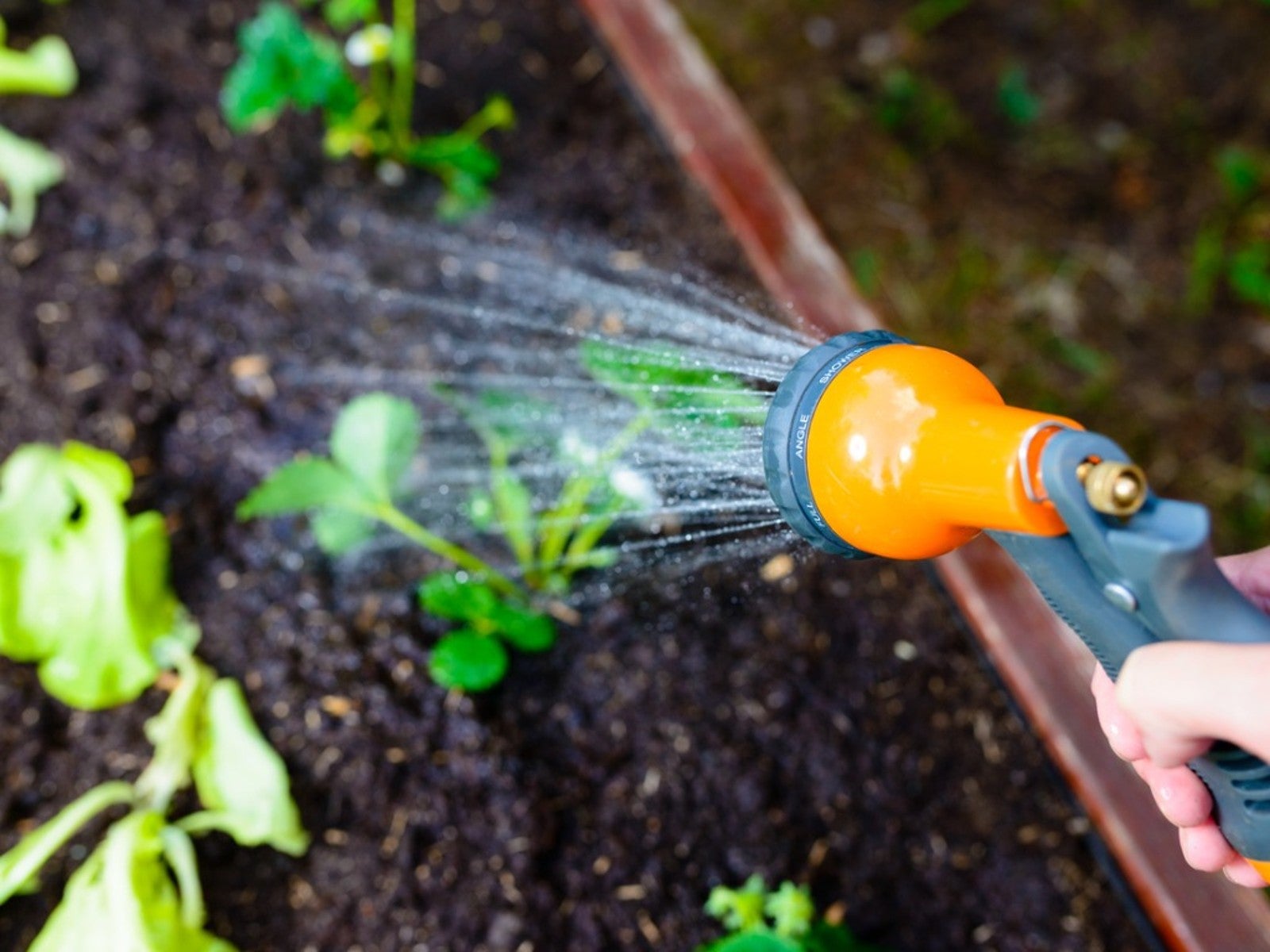How Often You Should Water A Vegetable Garden


“How often should I water my vegetable garden?” is a common gardening question. Unfortunately, there is no clear cut answer. Weather conditions, soil composition, and a plant's growing requirements all work together to determine irrigation needs. Luckily, there are ways to determine when and how much water your veggie patch needs.
Why Plants Need Water
When we think about the water required to grow vegetables, we often think about hydration. Water comprises as much as 95% of plant tissue and is an essential nutrient. Water is also used in the chemical reactions involved in photosynthesis and in the uptake and distribution of minerals.
As gardeners, we often associate wilting as the primary indication of a lack of hydration. Yet in a vegetable garden, other signs exist. When stressed by dry conditions, fruit on vegetable plants can be undersized, dry or nonexistent. Foliage veggies can become tough, bitter-tasting and prone to bolting.
So how much water do vegetable plants typically need? Most of our favorite garden veggie plants require about one inch (2.5 cm.) of water per week. This can be in the form of rainfall or from watering and irrigation. One of the easiest ways to track rainfall in the garden is with an inexpensive rain gauge.
Water Irrigation Calculations
To prevent the loss of potential produce yields in the vegetable garden, it's best not to wait when the weekly rainfall amount is less than 1 inch (2.5 cm.) per week. Vegetable watering can be managed in a number of ways, including hand watering, soaker hoses or an irrigation system. To calculate how much water your vegetable garden needs, follow these steps:
Step one: Calculate the square footage of your garden by multiplying the length times the width of the garden.
Step two: Multiply the square footage times .62 gallons (2.34 L.). The answer equals the number of gallons needed to supply one inch (2.5 cm.) of water to your garden.
Sign up for the Gardening Know How newsletter today and receive a free copy of our e-book "How to Grow Delicious Tomatoes".
Step three: Measure the weekly rainfall amount from the rain gauge. Three-tenths of an inch (7.6 ml.) of rain means you will need to supply seven-tenths or .7 inches (1.77 cm.) of water. Multiply the figure from step 2 by .7 to determine the number of gallons of water your garden needs.
An alternate method for determining if your garden needs water involves checking for dryness about an inch (2.5 cm.) below the soil surface.
Best Time to Water Vegetable Garden Plants
Drainage and evaporation are two factors that determine how well soil holds moisture. Generally speaking, sandy or light soils need to be watered more frequently than clay or heavy soils. Mulched surfaces help retain soil moisture by reducing evaporation and often need watered less frequently.
Early morning is generally considered the best time for watering gardens. This allows the plants to hydrate before the hottest part of the day. If water is delivered to the soil surface rather than the foliage, evening irrigation provides the same benefits. It's not recommended to apply water to foliage in the evening as this increases the risk for disease.
Although long-held as a gardening truism, watering plants in the hot midday sun does not scorch or burn the foliage. However more water is lost to evaporation, which may be an issue in water-restricted areas. Ultimately, the best time for watering vegetable garden plants is when they need it – whether that be morning, noon or night.

Laura Miller has been gardening all her life. Holding a degree in Biology, Nutrition, and Agriculture, Laura's area of expertise is vegetables, herbs, and all things edible. She lives in Ohio.